Futures Slide As Markets Await "Liberation Day" Details
Stocks resumed their slide and Treasury yields held near one-month lows with just hours to go before President Trump’s tariffs tariff announcement, amid swirling speculation over the details of the proposed trade action. As of 8:00am, S&P futures traded 0.5% lower; tech underperformed sending Nasdaq futs down 0.7% with Mag 7 all lower with TSLA (-1.0%) and NVDA (-0.6%) being the biggest laggards; Newsmax dropped 25%, pausing a blinding IPO rally that briefly pushed the company above Fox Corp. European and Asian stocks both slumped. The Dollar sank and the yield on 10-year Treasuries was steady after falling on Tuesday to the lowest since early-March. Commodities are mixed: base metals are lower, while precious metals are mostly higher (silver +1.0%) and gold just shy of its record high. All eyes on the Rose Garden event “Make American Wealthy Again” at 4PM with Trump delivering his announcement on tariffs. On today's data calendar, we get ADP (exp. 120k) and Factory Orders (0.5%, ex trans 0.4%).
In premarket trading, Tesla is leading losses among the Mag 7 (Alphabet -0.5%, Amazon -0.9%, Apple -0.4%, Microsoft -0.5%, Meta -0.9%, Nvidia -1.6% and Tesla -2.6%). Edgewise Therapeutics (EWTX) tumbles 29% after posting top-line data in its phase 2 study of EDG-7500. Newsmax (NMAX) drops 20% as the conservative media outlet pauses its blinding IPO rally which saw shares surge 2,230% since its debut this week. Here are some other notable premarket movers:
- NCino (NCNO) slides 34% after the software company gave a weaker-than-expected outlook.
- Norwegian Cruise Line (NCLH) slips 2% after registering a direct offering of 2.7m shares, with the offering priced at $19.06 each.
- Truist Financial Corp. (TFC) slips 1% after Raymond James cut the recommendation on the financial services firm ahead of the upcoming earnings, with analyst Michael Rose saying he “would not be surprised to see episodes of reduced financial guidance, leading to negative revisions to EPS estimates during the April reporting season.”
- TTEC Holdings (TTEC) soars 27% as the IT services company said it’s open to discussing CEO Kenneth Tuchman’s offer to buy the remaining shares he and his affiliates don’t already own at $6.85 per share.
Trump is due to reveal his tariff plans in the White House Rose Garden just as US markets close at 4 p.m. Several proposals are said to be under consideration, including a tiered tariff system with a set of flat rates for countries, as well as a more customized reciprocal plan. Bloomberg reports that the size and scope of tariffs have still to be finalized. The White House has said the tariffs would take immediate effect, but that Trump was open to subsequent negotiation. The lack of clarity doesn’t bode well for risk sentiment heading into the event, scheduled for 4pm ET. Central bankers are also expressing caution. Richmond Fed chief Barkin said tariffs could raise both inflation and unemployment in a “cage match” between consumers and businesses. Chicago Fed chief Goolsbee said that if tariffs lead to lower consumer spending, “that would be a bit of a mess.” Sure enough, according to Goldman's Prime Brokerage, hedge funds reduced exposure to global equities in March, with the most net selling in 12 years.
“There isn’t anywhere to purely hide, because of the huge uncertainty that is in the market at the moment,” said Helen Jewell, chief investment officer of fundamental equities EMEA at BlackRock. Jewell does not expect the confusion to dissipate after Trump’s announcement. “It is very much the opposite,” she said. “It just keeps that risk in the market and it kicks that risk can down the road.”
Meanwhile, China took steps to restrict local companies from investing in the US, Bloomberg reported; that comes a day after the European Commission vowed to retaliate against US tariff moves.
“Perhaps the most important question is whether this announcement will tip the scales toward a global recession,” said Oliver Blackbourn, portfolio manager at Janus Henderson Investors.
A quiet earnings week continues. Uniform maker UniFirst (UNF US) reports premarket and may offer clues on the impact from DOGE job cuts. Tesla 1Q deliveries are also due. Analysts expect Musk’s company to have delivered around 390,000 cars, potentially its worst quarter in a year.
Europe's Stoxx 600 fell 0.7% ahead of Trump’s tariffs announcement, with healthcare stocks among the biggest losers as mass layoffs at the US Department of Health sowed uncertainty over the outlook for vaccines and gene therapies. Among single stocks, Mercedes-Benz Group AG fell after Bloomberg reported the automaker could withdraw its least expensive cars from the US if tariffs make their sales unfeasible. Here are the biggest movers Wednesday:
- Grifols advances 10% in Madrid trading after El Confidencial reported that Brookfield has restarted contact with the Spanish plasma company on a possible buyout offer after a first attempt failed last year
- The Stoxx 600 Food & Beverage index is the best-performer in Europe this morning, after Berenberg reiniated coverage of the sector; Biggest points-gainers include Diageo (+1.8%), Pernod Ricard (+0.8%), AB InBev (+0.2%) and Heineken (0.4%)
- Bakkavor shares rise as much as 6.9%, hitting their highest level since 2018, after reaching an agreement in principle on a new £1.2 billion offer from fellow London-listed Greencore Group. Analysts welcome the idea
- Svitzer gains as much as 32%, the most since its May 2024 spinoff from Maersk, after the Danish marine services firm received a DKK9 billion ($1.3 billion) takeover offer from AP Moller Holding at DKK285 per share
- Raspberry Pi shares rise as much as 10% after the British PC maker said it expects demand to improve through the year from subdued levels of mid-2024, given inventory levels now “normalized”
- Barco shares rise as much as 9.3%, hitting their highest level since May, after analysts at ING Bank upgraded the visualization specialist, arguing it is a “far more attractive company” now growth is back on
- Friedrich Vorwerk shares rise as much as 4.6% to a record high after Berenberg hiked its price target on the stock to a Street high, citing a long growth runway and double-digit margin growth in the next year
- Chemring shares rise as much as 4.9% after its Roke unit won a UK missile defense contract worth £251m over six years. The contract starts immediately and covers a broad spectrum of missile defense activities
- European healthcare stocks drop on Wednesday and are the worst performing subgroup in the Stoxx 600 Index, as investors await further clarity on potential tariffs
- BNP Paribas and Societe Generale shares both fall about 3% in Paris as Kepler Cheuvreux downgrades its ratings on the French lenders following recent rallies
- Tryg falls as much as 5.6%, the most since January 23, after Citi downgraded the insurance firm to neutral from buy on news that the Danish Competition Council announced a possible review of consumer insurance firms
- Norma shares fall as much as 6.8%, hitting the lowest level since late November, after Quirin Privatbank downgraded the German component maker to sell and set a Street-low price target
Earlier in the session, Asian equities also fell as investor sentiment remained volatile. The MSCI Asia Pacific Index declined 0.1%, reversing from a 0.8% gain in the previous day. Xiaomi, Sony Group and Mitsubishi UFJ Financial weighed the most on the gauge, while Recruit Holdings and Fast Retailing provided the biggest boosts. Performances in the region were mixed, with markets in the Philippines and Malaysia gaining the most, while South Korean shares underperformed. The country’s small-cap index Kosdaq lost 1%. Japan’s benchmark Topix also slid 0.4%. Indonesia’s market was shut for a holiday.
“Investors are very anxious, and markets are waiting with bated breath to see what he will say and do later today,” Vasu Menon, managing director of investment strategy at OCBC, wrote in a note. “The best strategy at this juncture is not to panic, but instead to focus on the medium term and manage risk by keeping a diversified portfolio and time-diversifying fresh investments via dollar cost averaging.”
In FX, the Bloomberg Dollar Spot Index slips 0.1%, down a second day as antipodean currencies outperform, with the kiwi dollar up 0.8% against the greenback. EUR/USD climbs 0.1% to 1.0800; Governing Council member Olli Rehn reiterated that the ECB isn’t pre-committing to any particular path on interest rates. Aussie and kiwi advanced in part on buying from exporters hedging out of US dollars on the premise that reciprocal tariffs will be more centered than harsh, according to Asia-based FX traders. Low engagement from the leveraged community ahead of the announcement remains the main theme in the major currencies, according to traders in Europe and Asia. Traders undecided on what’s next for the G-4 space also seen through price action unfolding lately close to 21-DMAs.
In rates, treasuries extend gains into the early US session, leaving futures near the highs of the day and yields lower by up to 3bp across the belly of the curve, which leads gains on the day. US yields are richer by 1bp to 3bp across the curve, with 5s30s spread sitting near highs of the day and steeper by 1.5bp, unwinding a portion of a sharp two-day flattening move seen so far this week; US 10-year yields trade near lows at around 4.15%, remain inside Tuesday’s range. Bunds are little changed while Gilts underperform as UK 10-year yields climb 2 bps.
In commodities, spot gold rises $17 to $3,130/oz. Bitcoin pared an earlier fall to trade little changed near $85,000. WTI is steady around $71 a barrel.
The US economic calendar includes March ADP employment change (8:15am), February factory orders and durable goods orders (10am). Fed speaker slate includes Kugler at 4:30pm
Market Snapshot
- S&P 500 mini -0.6%,
- Nasdaq 100 mini -0.8%,
- Russell 2000 mini -0.6%
- Stoxx Europe 600 -0.7%,
- DAX -1%,
- CAC 40 -0.4%
- 10-year Treasury yield little changed at 4.17%
- VIX +0.5 points at 22.27
- Bloomberg Dollar Index little changed at 1272.15,
- euro little changed at $1.0801
- WTI crude -0.2% at $71.05/barrel
Top Overnight News
- Donald Trump’s team is still finalizing plans for reciprocal tariffs to be unveiled at 4 p.m., people familiar said. Proposals include a tiered system with a set of flat rates for countries and a more customized plan. Scott Bessent told lawmakers the tariffs will start at their highest level and countries can then take steps to bring them down. BBG
- Planned new U.S. tariffs could have a huge impact on world trade, Bank of Japan Governor Kazuo Ueda said on Wednesday, warning of a possible hit to global growth hours before President Donald Trump is set to unveil reciprocal tariffs. RTRS
- A group of 50 Republican and Democratic senators introduced a sanctions package to hit Russia and countries that buy its oil if President Vladimir Putin refuses to engage in good-faith ceasefire negotiations with Ukraine or breaches an eventual agreement: BBG
- Walmart Inc. is continuing to push Chinese suppliers to cut prices by 10% to offset President Donald Trump’s tariffs, even after Beijing officials summoned the US retailer’s executives last month to discuss the issue. BBG
- Democrat wins the Wisconsin judicial race by ~9 points, a solid victory and one that raises a red flag for Republicans. Also, Republicans easily won both Florida special House elections, as expected, although the GOP underperformed the Nov margins of victory, raising potential warning signs for the party. Politico
- Izzy Englander’s Millennium Management and Ken Griffin’s Citadel lost money last quarter even as other hedge funds gained: BBG
- China has taken steps to restrict local companies from investing in the US ahead of new tariffs, people familiar said. Several branches of China’s top economic planning agency have been instructed in recent weeks to hold off on registration and approval for such firms. BBG
- China highlighted US farmers and tech companies as beneficiaries of economic ties in the Communist Party’s official newspaper, an apparent appeal to cool trade tensions ahead of tariffs. BBG
- China held a second day of drills around Taiwan, involving “precision strikes” on simulated targets including ports and energy facilities. BBG
- Israel will broaden its ground operations in Gaza and turn seized land into buffer zones. Meanwhile, the Pentagon is deploying a second carrier to the Middle East as the US continues its strikes against Houthi rebels in Yemen. BBG
- US crude inventories jumped by 6 million barrels last week, the API is said to have reported. That would be the biggest surge in eight weeks if confirmed by the EIA today. Supplies at Cushing climbed for the first time in four weeks. BBG
- A more detailed look at global markets courtesy of Newsquawk
Tariffs/Trade
- USTR reportedly prepares a new tariff option for US President Trump which is "an across-the-board tariff on a subset of nations that likely would not be as high as the 20% universal tariff option", according to WSJ.
- US President Trump's tariff plans are "coming down to the wire" with his team reportedly still finalising the size and scope of the new levies, according to Bloomberg.
- US Treasury Secretary Bessent told lawmakers that Wednesday's tariffs are a 'cap', according to a CNBC reporter cited by Reuters.
- On UK-US tariffs, "Sounds like any hopes of a last-ditch concession from Donald Trump ahead of his tariffs announcement are fading", according to Times' Swinford; although a deal could be signed as soon as next week "Keir Starmer is not planning to speak to him today, but there are hopes that the economic deal giving Britain a carve-out can be signed as soon as next week. Sources talking about 'days or weeks'" "But in truth No 10 doesn't know what Trump is planning or when concessions could be made. All deeply uncertain this morning".
- Canada is to avoid counter-tariffs that risk Canadian jobs and price hikes and it won't impose retaliation tariffs on most US food and other basic necessities, according to the Globe and Mail citing two federal trade advisers.
- Thai Commerce Ministry said Thai semiconductors may face 25% US tariffs and noted that Thai tariffs are 11% higher than US tariffs, while it added Thailand may see an impact of USD 7bln-8bln from US reciprocal tariffs but announced it will increase imports of US goods and plans tariff cuts for US products.
- French Industry Minister reaffirms that Europe will respond to Trump tariffs in a proportionate manner; says Europe must show strength and be less naive
APAC stocks were mostly positive but with the major indices stuck within narrow parameters as participants awaited US President Trump's 'Liberation Day' tariff announcement scheduled later today. ASX 200 eked modest gains as strength in the real estate, tech and consumer discretionary sectors just about atoned for the losses in mining, resources and materials, while Building Approvals data from Australia printed better-than-feared. Nikkei 225 traded indecisively and wiped out most of its early gains as Japanese exporters braced for incoming US tariffs. Hang Seng and Shanghai Comp were mixed amid tariff uncertainty with China among the countries anticipated to announce an immediate retaliation to Trump's incoming tariffs, while China also awaits details regarding the US review of the 'Phase One' deal.
Top Asian News
- Standard Chartered raised its China 2025 GDP growth forecast to 4.8% from 4.5%.
- China's Commerce Ministry says the anti-dumping investigation into EU brandy has been extended to July 5th (from April 5th).
- US President Trump will consider a final proposal for TikTok on Wednesday and his administration is finalising plans for potential investors that could include Blackstone (BX) and Oracle (ORCL), according to CBS News. It was separately reported that President Trump is expected to meet senior cabinet officials and the Vice President to discuss potential investors for TikTok.
- US Senate Committee reviewing Meta (META) alleged efforts to build censorship tools for China as part of an attempt to gain entry to Chinese markets, according to a letter seen by Reuters.
- Fast Retailing (9983 JT) reports March domestic UNIQLO sales +11.5% Y/Y.
European bourses (STOXX 600 -0.9%) opened lower, despite a mostly positive picture in APAC trade and as traders remain focused on the looming reciprocal tariff announcements on “Liberation Day”. Price action has really only been downwards today, with a more pronounced bout of pressure appearing mid-morning though this has since stabilised a touch. European sectors hold a strong negative bias, in-fitting with the risk tone. Healthcare is the clear underperformer today, but with no clear stock driving the losses; the pressure is seemingly in tandem with the downside seen across US peers in the prior session, and perhaps some fears regarding potential pharmaceutical tariffs.
Top European News
- ECB's Rehn says the ECB is not committing to any particular path; disinflation is on track, and growth outlook weakened, the bank will maintain complete freedom of action. Trade protectionism is a key risk to the economic outlook.
- ECB's President Lagarde says inflation is very close to the target but there is still some work to do.
- German banks' association said Germany's economy is expected to grow by 0.2% this year and 1.4% next year.
FX
- DXY is flat vs. peers as markets brace for US President Trump's "Liberation Day" announcement at 21:00BST/16:00EDT. Ahead of which, CNBC reported that Trump is looking at three main options which are, 1) blanket 20% tariffs, 2) a tiered system of three different rates and 3) country-by-country rates; an official noted blanket 20% tariffs was the least likely option. Thereafter, a WSJ article noted that the USTR was preparing a new tariff option for Trump of "an across-the-board tariff on a subset of nations that likely would not be as high as the 20% universal tariff option". Note, ahead of the announcement, US Commerce Secretary Lutnick could provide some insight on the matter during an interview on Bloomberg TV at 13:30BST. DXY is currently tucked within Tuesday's 104.01-36 range.
- EUR is flat vs. the USD and holding just below the 1.08 mark as the Bloc braces for the fallout of the US "Liberation Day". As it stands, the EU retaliated to the Trump administration's steel and aluminium levies with countermeasure” on up to EUR 26bln worth of US goods. Commentary via ECB's Lagarde and Rehn have added little fresh for the Single-currency. Today's EZ docket is light in terms of data but heavy on speakers with the slate including ECB's Lagarde, Schnabel, Lane, Holzmann and Escriva.
- JPY is flat vs. the USD after USD/JPY topped out at the 150 mark. Fresh newsflow out of Japan has been on the light side as markets await details of the Trump tariff regime later today. USD/JPY remains caged within Tuesday's 148.97-150.14 bounds.
- GBP is flat vs. the USD and EUR with incremental macro drivers for the UK on the light side. Of course, the main focus for today's session will be the severity of the Trump administration's tariff plans. The Times' Swinford suggested that "any hopes of a last-ditch concession from Donald Trump ahead of his tariffs announcement are fading". Cable is currently holding above the 1.29 mark.
- Antipodeans have extended on Tuesday's upward momentum which was facilitated as risk sentiment improved stateside and with Australian buildings approval data showing a narrower-than-feared contraction. That being said, it is worth noting that the Trump tariff announcement carries a lot of risk for AUD and NZD given that China (both nations largest trading partner) is very much in the crosshairs of the US administration.
- PBoC set USD/CNY mid-point at 7.1793 vs exp. 7.2663 (Prev. 7.1775).
Fixed Income
- USTs are largely in a holding pattern overnight after coming under pressure in the US afternoon/evening on the more favourable tariff reports via CNBC, marked a 111-15 overnight low. More recently, modest upside occurred in the early European morning as the general tone deteriorated a touch. Ahead, markets will await trade updates from Commerce Secretary Lutnick at 08:30 EDT and then President Trump at 16:00 EDT. US data by way of ADP and Factory Orders is also due today, but ultimately may play second fiddle on "Liberation Day".
- Bunds are a touch firmer, the narrative is much the same as the above, though Bunds picked up slightly more than their US peer as the risk tone deteriorated in the early morning and have moved back into the green. Ahead a German 2035 Bund Auction and then a few ECB speakers are due - but focus will ultimately be on trade updates. Currently at the top-end of a 129.11-45 band, which is entirely within Tuesday’s 128.68-129.60 range.
- Gilts are in-fitting with the above though the bounce seen early doors, which took Bunds into the green as discussed, was only sufficient to cause Gilts to gap higher by five ticks and extend another two to a 92.15 peak. A high point which is shy of Tuesday’s 92.45 best. Tariffs dominate the narrative as we await Trump’s announcement. On the UK-US economic deal the Times’ Swinford reports that hopes of any last minute concessions for the UK are fading with no plans for the leaders to speak today.
- UK sells GBP 1.6bln 1.125% 2035 I/L Gilt : b/c 3.36x (prev. 3.52x) and real yield 1.268% (prev. 1.115%)
Commodities
- Softer trade across the crude complex amid the cautious risk sentiment heading into the "Liberation Day" tariff announcement by US President Trump and after the significant private inventory build. Continued expansion into Gaza by Israel's army, and punchy rhetoric via President Trump who believes Russian President Putin is stalling has failed to help push up prices. More recently, Axios reported that US President Trump is reportedly seriously considering Iran's offer of indirect nuclear talks - again failing to spur price action. Brent June trades in a USD 73.95-74.62/bbl parameter.
- Spot gold remains on a firmer footing after rebounding from the prior day's trough amid uncertainty ahead of the looming US reciprocal tariffs. Spot gold resides in a current USD 3,106.70-3,135.80/oz range.
- Copper futures eke mild gains but with the upside capped amid the mixed and cautious mood on 'Liberation Day'. Price action has been relatively contained for base metals thus far. 3M LME copper trades in a current USD 9,672.00-9,754.55/t range.
- US Private Energy Inventory Data (bbls): Crude +6.0mln (exp. -2.1mln), Distillate -0.0mln (exp. -1.0mln), Gasoline -1.6mln (exp. -1.7mln), Cushing +2.2mln.
- China's NDRC is to increase retail gasoline prices by CNY 230/ton and diesel by CNY 220/ton, effective April 3rd.
Geopolitics: Middle East
- US President Trump is reportedly seriously considering Iran's offer of indirect nuclear talks, while at the same time significantly boosting US forces in the Middle East in case the US opts for military strikes, according to Axios; no decisions made "A US official said Trump doesn't want to go to war with Iran but needs the military assets to establish deterrence in the negotiations — and to be prepared to act if negotiations fail and things escalate quickly."
- Israel's army launched heavy raids on the city of Rafah in the southern Gaza Strip, according to Sky News Arabia.
- Israeli Defence Minister said they are expanding the operation in Gaza to seize large areas that would be added to the security zones of Israel and announced a large-scale evacuation of the Gaza population from fighting areas.
- US Defence Secretary Hegseth ordered additional air assets to strengthen their Middle East military posture.
- US conducted three new airstrikes on Saada in northern Yemen, according to Houthi-affiliated media cited by Al Jazeera.
Geopolitics: Ukraine
- Bipartisan group of 50 Senators introduced a new sanctions measure which includes 500% duties against countries that purchase Russian oil, gas and uranium if Moscow refuses to participate in the peace process in Ukraine.
- Russian Defence Ministry says Ukraine attacked Russian energy facilities twice during the past 24 hours, via Ifax.
Geopolitics: Other
- China's military conducted exercises in the middle and southern areas of the Taiwan Strait with exercises codenamed 'Strait Thunder 2025A', according to Xinhua. Furthermore, China's Eastern Theatre Command said it carried out long-range live fire shooting drills in waters of East China which involved precision strikes on simulated targets of key ports and energy facilities which achieved the desired effects.
US Event Calendar
- 7:00 am: Mar 28 MBA Mortgage Applications, prior -2%
- 8:15 am: Mar ADP Employment Change, est. 120k, prior 77k
- 10:00 am: Feb Factory Orders, est. 0.5%, prior 1.7%
- Feb F Durable Goods Orders, est. 0.9%, prior 0.9%
- Feb F Durables Ex Transportation, est. 0.7%, prior 0.7%
- Feb F Cap Goods Orders Nondef Ex Air, prior -0.3%
- Feb F Cap Goods Ship Nondef Ex Air, prior 0.9%
DB's Jim Reid concludes the overnight wrap
The centre of the universe today will be the White House Rose Garden where we will finally hear about reciprocal tariffs. The announcements are due to take place at 4pm Eastern Time (9pm London), with the White House press secretary saying yesterday that the measures would be effective immediately. We clearly don’t know any of the details, including which countries will be targeted and at what rate, with reporting yesterday suggesting that a final decision was still to be made. The Washington Post reported that White House aides had proposed tariffs of around 20% on most imports. And despite speculation it might just affect 10-15 key trading partners, President Trump said over the weekend that “You’d start with all countries, so let’s see what happens”, which pointed towards a broader focus. Meanwhile, the WSJ reported last night that other options under consideration include a more targeted reciprocal plan as well as an across-the-board tariff on a subset of nations. And, according to Bloomberg, a tiered tariff system option could see countries face levies of either 10% or 20% depending on their barriers on US goods. In related news, Treasury Secretary Scott Bessent yesterday said that the tariffs announced today would be a cap and that countries would be able to bring them down. This hints at there being routes for negotiation in his eyes. A reminder that my AI summary of Bessent and Lutnick's recent podcast appearances can be found here. These were a fascinating insight into how this administration is thinking about the world.
Back to tariffs, and obviously, the prospect of broad-based tariffs would represent a huge shock to the global trading system, and would have some pretty seismic ramifications for the world economy. Last week, our US economists published a note (link here) where they ran through various possibilities. And significantly, they think that in a worst-case scenario where reciprocal tariffs include the entirety of each country’s VAT, that would see US GDP growth down 100-120bps this year relative to their current forecast of +2.3% (Q4/Q4), with core PCE inflation up 90-120bps. Meanwhile for the EU, our economists have estimated (link here) that a 20% tariff rate on all goods (on top of the 25% auto tariffs announced) would lead to a 0.3-0.6% shock for GDP.
The other big unknown from here is how other countries might retaliate, even though we have a pretty good sense that they’re likely to do so. After all, EU Commission President Ursula von der Leyen said yesterday that “If necessary, we have a strong plan to retaliate and will use it.” Over in Canada, Prime Minister Carney said that “We will not disadvantage Canadian producers and Canadian workers relative to American workers”. Moreover, President Trump has already said that any retaliation could be met by further US tariffs, so a key downside risk from here is that this kicks off an escalatory spiral of higher tariffs.
Ahead of today’s announcement, fears about stagflation in financial markets continued to mount even if markets had a pretty positive day yesterday. The stagflation fears were exacerbated by the latest batch of US data, where the ISM manufacturing print fell back into contractionary territory with a 49.0 print (vs. 49.5 expected). Moreover, the new orders component fell to a 22-month low of 45.2, whilst the prices paid component surged to 69.4, which is the highest it’s been since June 2022. The weaker ISM release saw the Atlanta Fed’s GDPNow Q1 estimate (adjusting for trade in gold) fall to a new low of -1.4%, while the model’s estimate of real private domestic final sales, which are much less distorted by trade volatility, fell to a still positive but weak +0.4%.
The data is continuing to support the narrative of weaker growth and higher inflation, with market-based inflation expectations continuing to rise. The US 1yr inflation swap (+0.6bps) moved higher for a seventh session in a row to another two-year high of 3.25%, though it did retreat after trading +5.0bps intra-day. The reversal during the afternoon session may have reflected emergent reporting that more modest tariff options were still in play, which also helped gold prices (-0.17%) post a modest decline after touching an new record high of $3,149/oz intra-day. As a reminder, gold saw its strongest quarterly performance since 1986 in Q1. This was among the notable highlights from Henry's Q1 performance review (link here).
For equities, it was another topsy-turvy session, with the S&P 500 recovering from an intraday low of -0.95% to end the day up +0.38%. So a very similar move to Monday. The Magnificent 7 (+1.63%) were the main driver of the rebound, ending a run of 4 consecutive declines, with Tesla (+3.59%) leading the way. Outside of tech, it was a pretty neutral day, with the Dow Jones (-0.03%) and the Russell 2000 (+0.02%) little changed. Meanwhile in Europe, there were even stronger moves, with the STOXX 600 (+1.07%) and the DAX (+1.70%) posting their strongest performances in over two weeks.
Elsewhere, US Treasuries continued to rally as ongoing growth fears helped yields to grind lower. For instance, the 2yr yield (-0.2bps) inched down to 3.88%, its lowest level since October, whilst the 10yr yield (-3.7bps) fell back to 4.17%. The fact investors were fearful about growth was evident from the ongoing decline in real yields, with the 2yr real yield (-1.3bps) down to its lowest since August 2022, at 0.59%.
Over in Europe, sovereign bonds also rallied after the latest Euro Area inflation data was seen as paving the way for more ECB rate cuts. For instance, CPI fell back to +2.2% in March on the flash reading, in line with expectations. And in more dovish news, the core CPI reading fell to +2.4% (vs. +2.5% expected), which is the lowest it’s been since January 2022. So that helped yields to move lower across the continent, with those on 10yr bunds (-5.2bps), OATs (-5.3bps) and BTPs (-7.7bps) all falling.
Asian equity markets are pretty quiet ahead of today's big announcement. As I check my screens, the Hang Seng (+0.06%), CSI (+0.15%), Shanghai Composite (+0.23%), Nikkei (+0.15%) and the S&P/ASX 200 (+0.10%) are all edging higher. The KOSPI (-0.62%) is bucking the trend but S&P 500 (-0.13%) and NASDAQ 100 (-0.14%) futures are also slightly lower.
Early morning data showed that South Korea’s inflation unexpectedly rose to +2.1% y/y in March (vs +1.9% market consensus) as against a +2.0% increase the previous month, thus complicating the Bank of Korea’s rate cut cycle.
Finally, we got a few other data releases yesterday, including the US JOLTS report for February. That showed job openings were down to 7.568m (vs. 7.658m expected), which meant the ratio of vacancies per unemployed individuals fell to 1.07, the lowest since September. Otherwise, the quits rate remained steady at 2.0%, as did the hires rate at 3.4%. Separately in the Euro Area, the February unemployment rate came in at 6.1% (vs. 6.2% expected), which is the lowest rate since the single currency’s formation. We also got the final manufacturing PMI for March, which was revised down a tenth from the flash reading to 48.6.
To the day ahead now, and data releases from the US include the ADP’s report of private payrolls for March, and factory orders for February. Central bank speakers include the ECB’s Schnabel, Escriva, Holzmann and Lane, along with the Fed’s Kugler.
Tyler Durden Wed, 04/02/2025 - 08:06
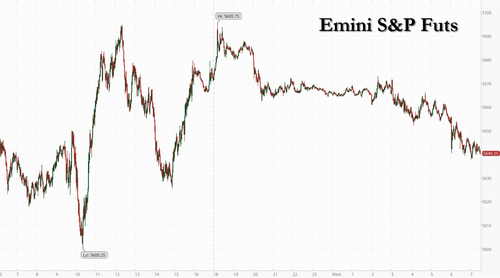
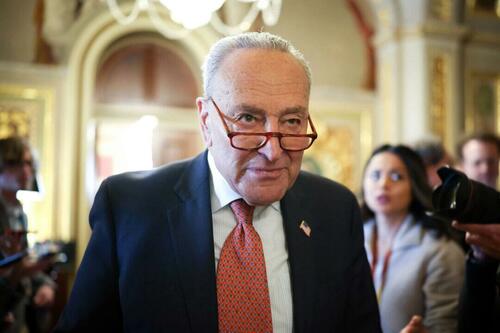 Senate Minority Leader Chuck Schumer (D-N.Y.) in Washington on March 13, 2025. Kayla Bartkowski/Getty Images
Senate Minority Leader Chuck Schumer (D-N.Y.) in Washington on March 13, 2025. Kayla Bartkowski/Getty Images



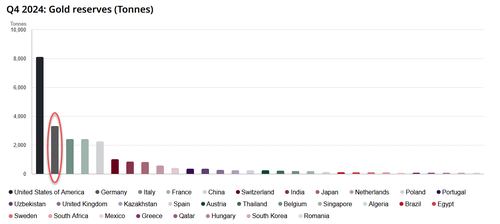
 Click pic, buy ZeroHedge gold bars, puzzle future historians... Only 40 left in stock! These have been flying.
Click pic, buy ZeroHedge gold bars, puzzle future historians... Only 40 left in stock! These have been flying. 
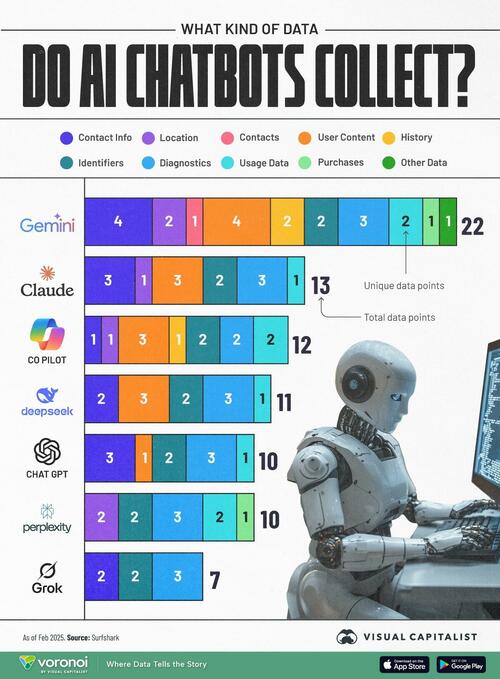
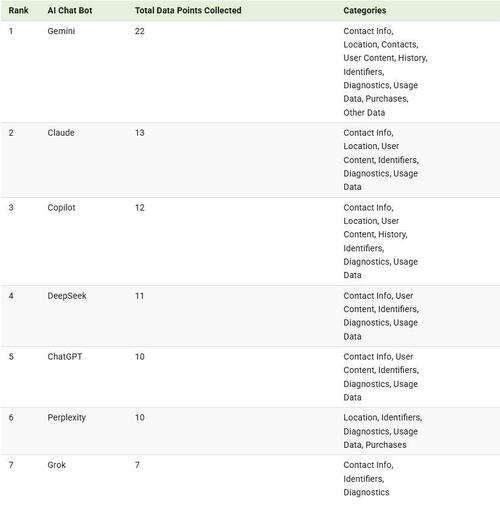
 Ambulances transport the coffins of Hezbollah fighters and civilians killed in the recent war with Israel, during their funeral procession in the southern border village of Kfar Kila, Lebanon, on March 9, 2025. Rabih Daher/AFP via Getty Images
Ambulances transport the coffins of Hezbollah fighters and civilians killed in the recent war with Israel, during their funeral procession in the southern border village of Kfar Kila, Lebanon, on March 9, 2025. Rabih Daher/AFP via Getty Images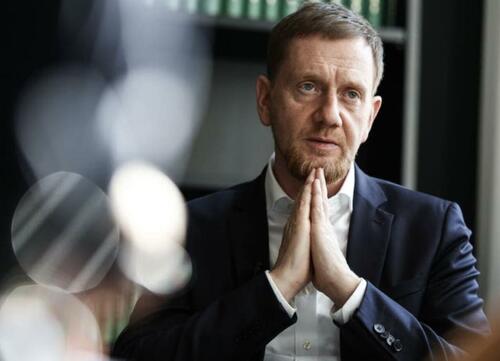 The CDU’s Michael Kretschmer, via dpa
The CDU’s Michael Kretschmer, via dpa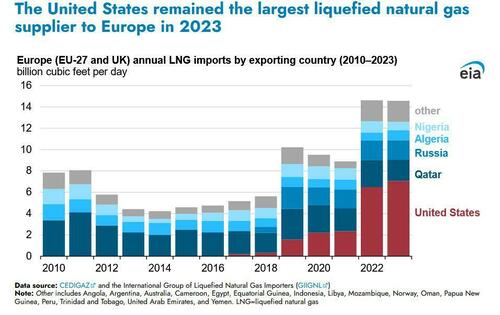 Source:
Source:  Sources say Turkey intends to deploy air defence systems like the Hisar (pictured) at T4 air base in Syria (handout).
Sources say Turkey intends to deploy air defence systems like the Hisar (pictured) at T4 air base in Syria (handout). Map via BBC
Map via BBC
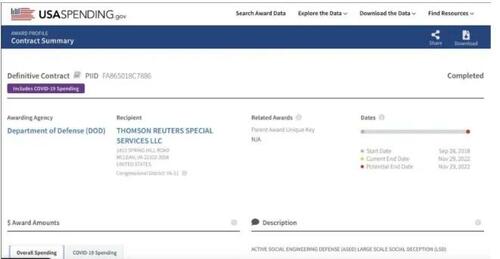
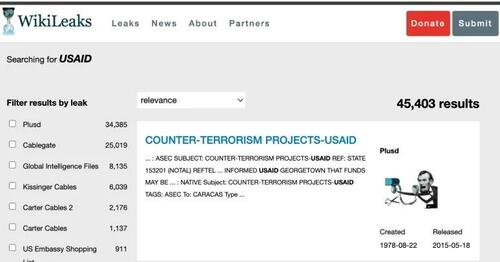
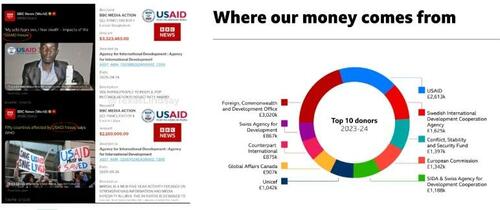
 US Navy image
US Navy image


 Illustration by The Epoch Times, Getty Images, John Fredricks/The Epoch Times
Illustration by The Epoch Times, Getty Images, John Fredricks/The Epoch Times A bag of illicit fentanyl pills is held as Homeland Security Secretary Kristi Noem tours the San Ysidro Port of Entry at the U.S.–Mexico border in San Diego on March 16, 2025. Alex Brandon/Getty Images
A bag of illicit fentanyl pills is held as Homeland Security Secretary Kristi Noem tours the San Ysidro Port of Entry at the U.S.–Mexico border in San Diego on March 16, 2025. Alex Brandon/Getty Images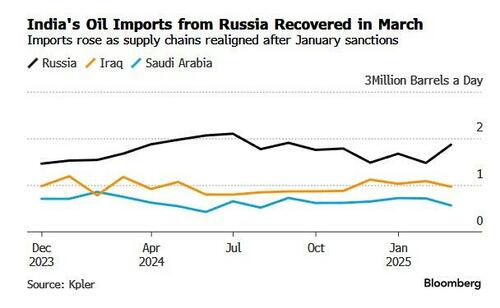
 Cooper Frederick. Larimer County Sheriff's Office
Cooper Frederick. Larimer County Sheriff's Office



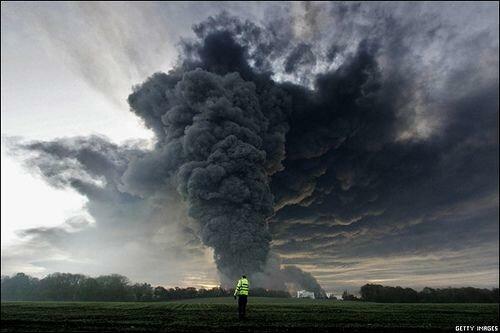
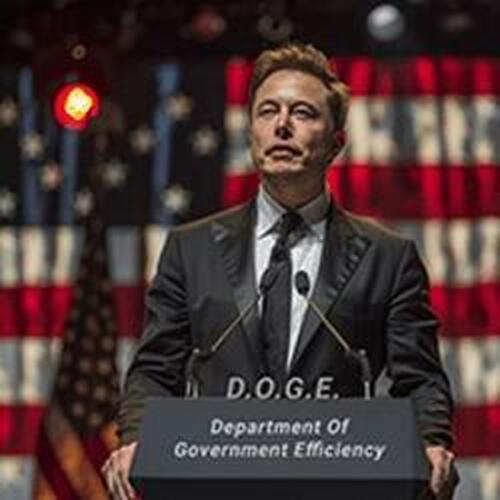


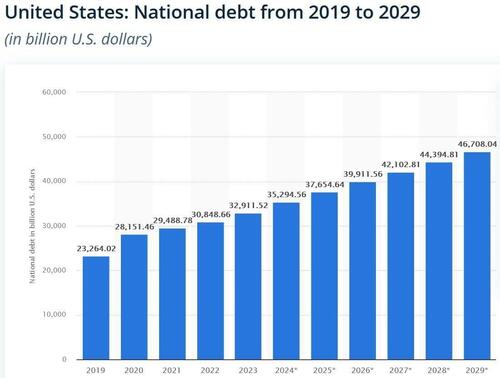



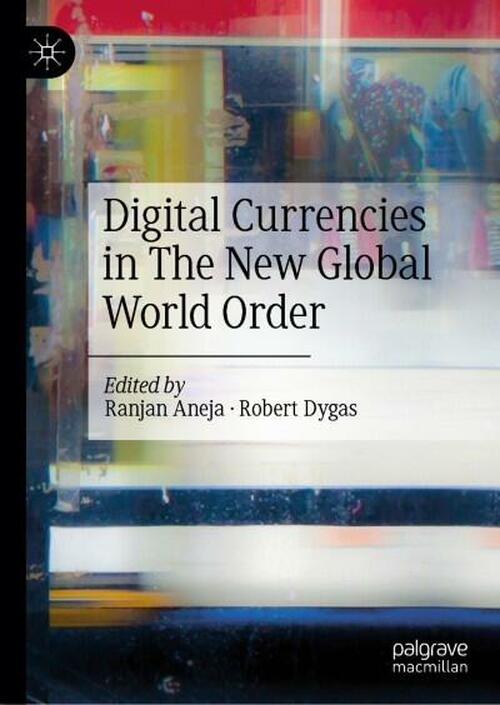







Recent comments